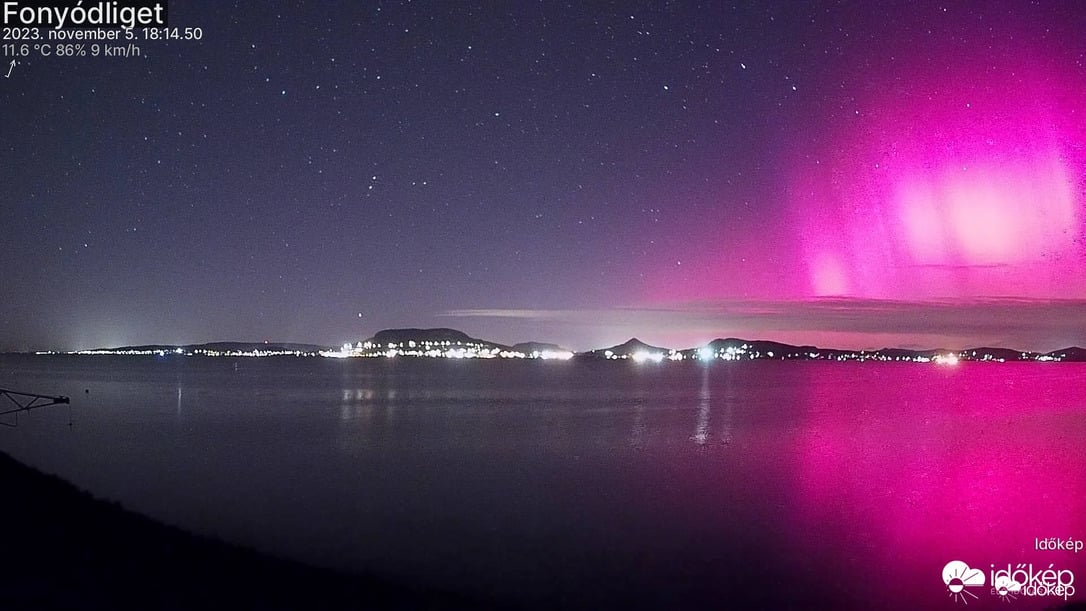
Red-purple aurora borealis — Northern Lights — was clearly visible in several parts of Hungary, including the areas near Szeged, on Sunday, November 5, 2023. Northern Lights can be observed in Hungary too, but rarely to this extent. Dr. Habil. Tamás Gál DSc, senior associate professor of the Institute of Geosciences, Department of Climatology and Landscape of SZTE Faculty of Sciences and Informatics explained the background of the phenomenon.
From earth sciences' point of view, we witnessed a particularly exciting phenomenon in the past few days, when one of the most impressive manifestations of the Sun's activity, a coronal ejection, directly affected our planet. Such solar events not only attract the attention of astronomers but also provide important data in the study of geophysical phenomena since the magical aurora borealis can be detected even in our country due to their effect on the Earth's magnetic field.
On November 3, a coronal ejection occurred on the surface of the Sun, which is part of the natural functioning of the star. At that time, a large amount of plasma cloud consisting of charged particles leaves the surface, and days later it reaches the Earth as a geomagnetic storm. Due to the Earth's magnetic field, charged particles can only approach the surface along the north and south magnetic poles, where they collide with particles in the denser atmosphere at lower altitudes and cause light phenomena.
The most common color is green, which is a consequence of the reaction with oxygen molecules, but in the present case, the dominant color was red, which indicates a reaction with nitrogen molecules at low altitude (100 km) and with oxygen atoms at high altitude (300-400 km). In addition to the spectacle, a geomagnetic storm can damage power grids, but this time, according to the US NOAA's assessment, the storm was a G2 class, which is the second weakest on a scale from 1 to 4.
The aurora borealis can often be seen in Hungary as well if there is a strong coronal ejection and favorable visibility conditions. Sunday was particularly lucky, because the phenomenon of the aurora borealis was strong in the part of the pole towards Hungary, and after the cold front that passed through on Sunday, an extremely clean and cold air mass prevailed in Central Europe, which ensured excellent visibility.
Several sightings of the phenomenon were reported from several places in the Southern Great Plain, but unfortunately, due to public lighting and other light pollution, it was not visible in the center of the larger cities, including the center of Szeged. It should be noted that the understanding of this basically harmless, but at the same time, extremely imposing phenomenon requires complex earth science (geophysics, meteorology) knowledge, in which areas the SZTE Institute of Geosciences is at the forefront of domestic research and education in Hungary.
Text: Dr. Habil. Tamás Gál DSc
Translation: SZTEinfo
Featured image: Screenshot of a webcam, Időkép

